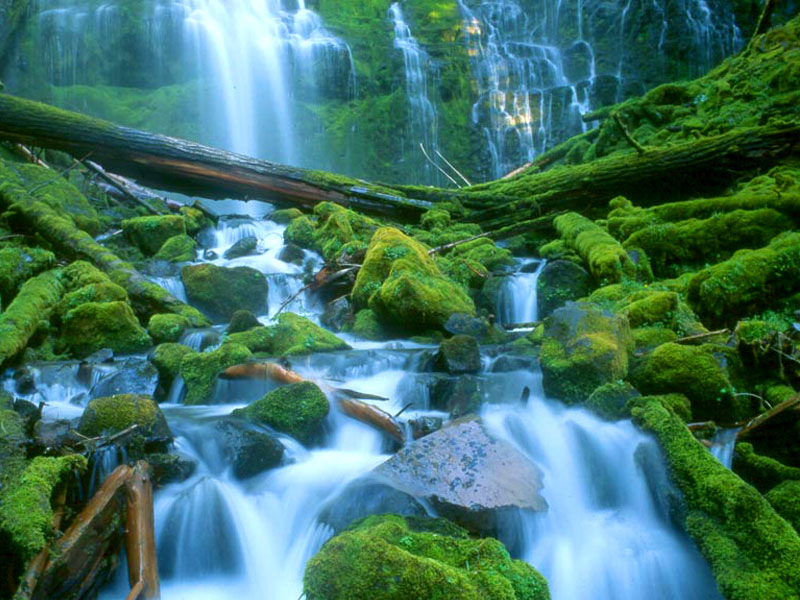Wild & Scenic Rivers Act
 The Wild and Scenic Rivers Act represents an historic turning point in our nation’s conservation ethic. The policy enunciated in the Act of preserving some rivers and their immediate environments in a free-flowing, natural condition contrasts sharply with the dam building and water diversion ethos that completely dominated our national river policy up until that time. Wild and scenic rivers provide a wealth of benefits including clean water for municipal and agriculture purposes as well as recreational experiences ranging from primitive non-motorized to urban motorized uses. The ecological values of these river corridors may prove the most important of all. They provide essential habitat for wildlife species, many of which are endangered or threatened with extinction, and serve as corridors for connecting larger natural areas and linking diverse vegetative zones. Wild and scenic rivers will continue to play a crucial role in our country’s natural and cultural heritage.
The Wild and Scenic Rivers Act represents an historic turning point in our nation’s conservation ethic. The policy enunciated in the Act of preserving some rivers and their immediate environments in a free-flowing, natural condition contrasts sharply with the dam building and water diversion ethos that completely dominated our national river policy up until that time. Wild and scenic rivers provide a wealth of benefits including clean water for municipal and agriculture purposes as well as recreational experiences ranging from primitive non-motorized to urban motorized uses. The ecological values of these river corridors may prove the most important of all. They provide essential habitat for wildlife species, many of which are endangered or threatened with extinction, and serve as corridors for connecting larger natural areas and linking diverse vegetative zones. Wild and scenic rivers will continue to play a crucial role in our country’s natural and cultural heritage.
VIEW FULL TEXT OF THE WILD & SCENIC RIVERS ACT
Protection and Use
Rivers in the system are classified as either wild, scenic, or recreational depending on the degree of development existing at the time of designation (see Wild and Scenic Rivers Act excerpts at the end of this booklet for a description of each classification). The Act requires that each river or segment of river “shall be administered in such manner as to protect and enhance the values which caused it to be included” in the system. Management should follow a policy of “non-degradation,” that is, any decision affecting a wild and scenic river must first ensure that the decision does not in any way harm a value(s) which caused the river to be designated. Only a very small amount (less than one quarter of one percent) of U.S. river miles are designated as either wild or scenic: Every effort should be made to preserve and/or restore their natural ecological conditions and function.
Wild Rivers
Wild river areas are described in the Act as being “essentially primitive” and representing “vestiges of primitive America.” There should be no roads or other permanent structures built within the river corridor, and there should be little or no evidence of human activity. Motorboat use may be allowed, but unless otherwise authorized by law, it should be limited to the level of use that was occurring at the time of designation. Opportunities to phase out motorboat use should be pursued.
Scenic Rivers
Scenic river areas are described as “largely primitive and shorelines largely undeveloped, but accessible in places by roads.” Thus, some rivers or segments of rivers that otherwise appear natural have existing developments that preclude their classification as wild. This shouldn’t be interpreted as justification for additional structures or roads, which would almost certainly diminish the values for which the river was designated to protect. Motorboat use may be allowed, but unless otherwise authorized by law, it should be limited to the level of use that was occurring at the time of designation. Opportunities to phase out motorboat use should be pursued.
Recreational Rivers
Recreational river areas must be free-flowing, but may include a high degree of development along their shorelines. They can exist within urban or intensive agricultural zones. Their value for recreation, for improving water quality, and as greenways for humans and pathways for wildlife should not be underestimated. Decisions affecting recreational river areas should strive to restore, as near as possible, the river and its shorelines to their natural condition.
Learn more about the National Wild and Scenic Rivers System here.
Photo: George Wuerthner
Contact Us
Wilderness Watch
P.O. Box 9175
Missoula, MT 59807
P: 406.542.2048
Press Inquiries: 406.542.2048 x2
E: wild@wildernesswatch.org
Minneapolis, MN Office
2833 43rd Avenue South
Minneapolis, MN 55406
P: 612.201.9266
Moscow, ID Office
P.O. Box 9765
Moscow, ID 83843
